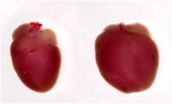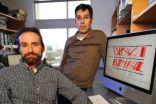(Press-News.org) Ms. K. is vision-impaired and can't get around very well any more. Still, the 80-year-old, who lives alone, has no intention whatsoever of moving to a retirement home. Most elderly people think the same way. They want to stay in their accustomed surroundings as long as possible, where they can lead an autonomous life. What many fail to realize is that they are risking their health in the process. Cardiovascular problems are more frequent among the elderly, and the risk of falling is more prevalent: one person in three above the age of 65 falls once a year; among those over 80 the ratio is nearly one in two. Many of these accidents occur in private homes in the course of everyday activities, and often at night. Frequently it is hours before the injured are cared for. Even home emergency-call systems are of limited help when senior citizens cannot sound the emergency signal. They may be injured or disoriented, or may simply not have the emergency button on their person. Help could be forthcoming from an intelligent system that automatically identifies and responds to emergency situations such as these. One such solution is under development by researchers at the Fraunhofer Institute for Experimental Software Engineering IESE in Kaiserslautern, Germany. Their project is dubbed "ProAssist4Life" – shorthand for "Proactive Assistance for Critical Life Situations." Project partners include the company CIBEK technology + trading, Binder Elektronik and the Westpfalz Klinikum.
IESE scientists are working on an unobtrusive system that provides constant "companionship" to elderly people living in single households or in retirement facilities. Multisensory nodes mounted to the ceiling of a room register an individual's movements. "Our system records how long a person spends in what part of the home," notes Holger Storf, a scientist at IESE. A radio signal transmits the data to a computer. Software documents the individual's daily activities, constantly learning the person's "normal behavior." The analytical software compares the resident's current activity with the model that has been generated. This is how it identifies situations that deviate from the norm – situations that could be an indication that the person has fallen, is lying unconscious on the ground and is in a helpless situation. "If a person spends considerably longer in the bathroom, for instance, or in some other place in the home, this is registered. To prevent false alarms, the first response is to prompt the individual," Storf explains. This can be accomplished with a telephone call, for instance, or by means of a touchscreen monitor with an integrated speaker. The individual can then respond by touching the monitor. Should the elderly person fail to respond, the software sends a text message to a trusted individual such as a family member or caregiver.
"Our solution is not designed to replace home emergency-call systems but is intended to serve as a kind of airbag to give people living in single households a sense of safety," the researcher emphasizes. Unlike comparable competitor products, neither cameras nor microphones are required. Senior citizens do not need to carry sensors on their person, either. Because the system operates via radio signal, there is no need to install wiring. The system is easy to install.
"To date, there has been no comparable, learning-capable system on the market that constantly adapts to an individual's behavior," Storf notes. The researcher and his team have applied for patents of the software and the multisensory nodes. The experts will be exhibiting a prototype of "emergency detection in the home" at the CeBit 2011 in Hanover, Germany, where they will demonstrate its operation, in a kitchen built for the purpose, at the Fraunhofer joint stand (Hall 9, Stand B36).
INFORMATION:
Emergency detection systems for senior citizens
2011-02-05
ELSE PRESS RELEASES FROM THIS DATE:
Recipe for family mealtimes calls for 3 ingredients in the right amounts
2011-02-05
URBANA – A University of Illinois scientist reports that family mealtimes that contain three ingredients in the right amounts can improve the quality of life in children who have chronic asthma.
"Family mealtimes, when they're done right, are linked to many benefits for children, including a reduced risk of substance abuse, eating disorders, and obesity. In this study, we've put these mealtimes under a microscope so we can see minute by minute which factors deliver these healthy outcomes," said Barbara H. Fiese, director of the U of I's Family Resiliency Center.
Which ...
Improving care for bowel cancer patients
2011-02-05
Rainer Kube and his working group report in the current issue of Deutsches Ärzteblatt International (Dtsch Arztebl Int 2011; 108[4]: 41-6) on new treatment strategies in patients with colon cancer.
The findings of multicenter observational studies are a good basis for improvements to overall quality of patient care. Against this background, from 2000 to 2004 Kube and his coauthors collected data on over 31 000 patients in 346 German hospitals. From this data pool they extracted statements about the quality of care. They discovered, for example, that colonoscopy screening ...
Unemployment: A health risk
2011-02-05
Compared to people in employment, men and women who are unemployed suffer more often and longer from both physical and emotional complaints. Why the un-employed should have health problems more often is discussed by Lars E. Kroll and his coauthor in the current issue of Deutsches Ärzteblatt International (Dtsch Arztebl Int 2011; 4: 47-52), along with a report on the findings of the GEDA study.
The GEDA study (Gesundheit in Deutschland Aktuell, or Current Health in Germany) was carried out in 2008-2009 by the Robert Koch Institute. The results showed that unemployed people ...
Just in time for Valentine's Day: UNC researchers identify a gene critical for heart function
2011-02-05
CHAPEL HILL, N.C. – Everyone knows chocolate is critical to a happy Valentine's Day. Now scientists are one step closer to knowing what makes a heart happy the rest of the year.
It's a gene called DOT1L, and if you don't have enough of the DOT1L enzyme, you could be at risk for some types of heart disease. These findings from a study led by researchers at the University of North Carolina at Chapel Hill School of Medicine appear in the Feb. 1, 2011 issue of the journal Genes and Development.
The team created a special line of mice that were genetically predisposed to ...
First stars in universe were not alone
2011-02-05
The first stars in the universe were not as solitary as previously thought. In fact, they could have formed alongside numerous companions when the gas disks that surrounded them broke up during formation, giving birth to sibling stars in the fragments. These are the findings of studies performed with the aid of computer simulations by researchers at Heidelberg University's Centre for Astronomy together with colleagues at the Max Planck Institute for Astrophysics in Garching and the University of Texas at Austin (USA). The group's findings, published in Science Express, ...
Smithsonian scientists discover 7 new species of fish
2011-02-05
Things are not always what they seem when it comes to fish—something scientists at the Smithsonian Institution and the Ocean Science Foundation are finding out. Using modern genetic analysis, combined with traditional examination of morphology, the scientists discovered that what were once thought to be three species of blenny in the genus Starksia are actually 10 distinct species. The team's findings are published in the scientific journal ZooKeys, Feb. 3.
Starksia blennies, small (less than 2 inches) fish with elongated bodies, generally native to shallow to moderately ...
HPV vaccine works for boys: Study shows first clear benefits
2011-02-05
The vaccine for human papillomavirus (HPV) can prevent 90 percent of genital warts in men when offered before exposure to the four HPV strains covered by the vaccine, according to a new multi-center study led by H. Lee Moffitt Cancer Center and UCSF.
The four-year, international clinical trial, which also found a nearly 66 percent effectiveness in the general population of young men regardless of prior exposure to these strains, provides the first reported results of using the HPV vaccine as a prophylactic in men.
Initial data from this study informed the Food and Drug ...
ParentCorps helps children do better in school
2011-02-05
NEW YORK (February 4, 2011) – Researchers at the NYU Child Study Center demonstrated that a brief program for families of Pre-Kindergarten students attending schools in disadvantaged urban communities improved children's behavior at school. The study, called "Promoting effective parenting practices and preventing child behavior problems in school among ethnically diverse families from underserved, urban communities," was published in the February 2011 issue of Child Development.
Dr. Laurie Miller Brotman and her colleagues spent several years developing ParentCorps, ...
Discovery of jumping gene cluster tangles tree of life
2011-02-05
Since the days of Darwin, the "tree of life" has been the preeminent metaphor for the process of evolution, reflecting the gradual branching and changing of individual species.
The discovery that a large cluster of genes appears to have jumped directly from one species of fungus to another, however, significantly strengthens the argument that a different metaphor, such as a mosaic, may be more appropriate.
"The fungi are telling us something important about evolution … something we didn't know," said Antonis Rokas, assistant professor of biological sciences at Vanderbilt. ...
Johns Hopkins researchers capture jumping genes
2011-02-05
An ambitious hunt by Johns Hopkins scientists for actively "jumping genes" in humans has yielded compelling new evidence that the genome, anything but static, contains numerous pesky mobile elements that may help to explain why people have such a variety of physical traits and disease risks.
Using bioinformatics to compare the standard assembly of genetic elements as outlined in the reference human genome to raw whole-genome data from 310 individuals recently made available by the 1000 Genomes Project, the team revealed 1,016 new insertions of RIPs, or retrotransposon ...



